Doctor
Informing the Canberra medical community since 1988
The first month of the Digital Health Record (DHR) has been a steep learning curve, with some significant glitches and more than 2000 daily requests for technical assistance in the first weeks. Yet already, there is evidence the new system is working to reduce medication errors and improve patient safety.

Almost 10,000 staff across Canberra Health Services were trained in preparation for the highly anticipated November 12 launch of Epic, which replaces over 50 disparate and outdated clinical systems. Hospital services were put into a ‘slowdown’ to give staff time to adjust to the changes, and expert clinical users were flown in from hospitals in Singapore, Ireland and Melbourne to assist with the rollout.
Dr Andrew Miller, a consultant dermatologist and AMA board member
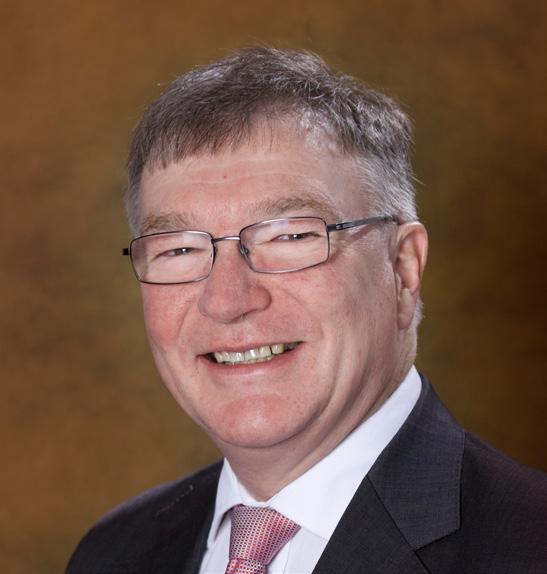
told Canberra Doctor: “It’s been a very steep learning curve for everybody. Despite all the forward planning, there were a lot of wrinkles that didn’t become evident until the system went live.”


Hiccups included discharge summaries 211 pages long; pathology reports that were impossible to interpret; patients going ‘missing’ in the system because they were admitted under a part-time consultant rather than a team; referral letters being sent to the wrong place; and some staff being
unable to connect to the system at all. However, Dr Miller said that by and large, the DHR Team at Canberra Health Services and Epic had been responsive to feedback and busily working through the issues. “They make a blue-arsed fly look lazy,” he quipped. There have been some silver linings too, according to Dr Miller. “We can now easily look at the notes for patients who have been inpatients at Canberra or Calvary hospital.”
Despite all the forward planning, there were a lot of wrinkles that didn’t become evident until the system went live.
We are actively managing these clinical risks and trying to get on top of them all.
“It was reassuring to talk to one of the ‘super users’, a paediatrician from Melbourne who was assisting us at a clinic, who said once you get used to the new system, it’s really good,” he added.
Dr Betty Ge, a GP in Canberra and representative on the AMA’s Council of Doctors in Training told Canberra Doctor: “Like any big change, adjusting to the DHR is a painful process, but I think most doctors appreciate that it’s going to be for the greater good.”

“Many of the hospital registrars I’ve spoken to have had experience with the DHR from working at other hospitals and so know there’s light at the end of the tunnel,” she added.
Her own practice experienced a delay in receiving discharge summaries in the first week, however that issue seems to have resolved. “The DHR team is very responsive,” she said.
Why choose I-MED Radiology?

Across Australia, I-MED Radiology Network operates 250 clinics and performs over 6 million patient procedures each year, making us one of the largest providers of medical imaging in the world. With over 350 doctors and 4,000 staff actively sharing clinical knowledge and expertise, a consistently high level of service is assured across all clinics.
Our commitment to maintain strong regional service provisions; including comprehensive modality offerings and an onsite radiologist is important to us and something we actively pursue. As a result, in 2022 we introduced the first MRI service to the south side of Canberra in Tuggeranong. Our radiologists have a range of radiological skills and interests and are available for consultation. We are here to partner with you to ensure the best possible healthcare outcome for your patient.
DHR rollout ‘a very steep learning curve’ Issue
2022 | Canberra Doctor is proudly brought to you by the AMA (ACT) Limited. Circulation: 1,900 in ACT & region CANBERRA ACT Ph: Fax: Bone Densitometry (DEXA) Cardiac CT CT Interventional procedures General X-ray Mammography/ Tomosynthesis MRI Nuclear Medicine OPG Ultrasound Belconnen 6109 6900 6109 6949 Deakin 6124 1900 6124 1950 Tuggeranong 6293 2922 6293 1212 Woden 6214 2222 6281 4261
5,
further information visit i-med.com.au
For
the
Delivering exceptional quality imaging to
ACT
VOLUME 34, No. 5
Continued page 5
CANBERRA DOCTOR: Informing the Canberra medical community since
1988
Associate Professor Rohan Essex Dr Andrew Miller
President’s Notes
among our healthcare workforce. As we come to the end of 2022, it’s worth pausing to celebrate the good among us, and the achievements we’ve had.
AMA ACT highlights
We rounded out 2022 with a wonderful Graduation Breakfast to celebrate this year’s graduating students from ANU Medical School. These students have shown great persistence and resilience over some very disrupted years and I am glad to be welcoming many of them as colleagues here in Canberra.

They call this the silly season, and it’s certainly felt that way lately, though that’s more to do with bugs in the Digital Health Record than brandy in the Christmas pudding, with disappearing discharge summaries and gobbledygook pathology reports. While I know not all of us will get the rest we crave over the holiday period, I sincerely wish you all a very happy Christmas and a peaceful new year. It’s been another year of out-of-theordinary challenges. Many of us have found ourselves playing catch-up with elective surgery waiting lists and other work that was put on hold at the height of the pandemic. On top of this, we are all challenged to adapt ourselves to the ways of the DHR, albeit with the support of the hard-working DHR Team. Amid all the pressures, I’ve been impressed by the optimism, patience and in many instances, kindness
I am confident that our Council of Doctors in Training will be a platform for advocacy and support for this group in the next phase of their careers.
AMA ACT was pleased to support our members through our first Fees List Workshop for practice managers in December. The event was a valuable opportunity for staff from general practices and other specialist medical practices to hear from our Fees List Team on how to stay on top of the frequently changing Medicare Benefits Schedule. We plan to run the event again in the new year after positive feedback.
This year AMA ACT began a successful partnership with Drs4Drs ACT. Through the Drs4Drs ACT Safe Space events we have provided a forum for doctors to look after one another and have been able to bring the best thinking on doctor wellbeing and professional fulfilment to Canberra. We are also
AMA ACT President-Elect, Dr Kerrie Aust (centre) at the Graduation Breakfast.
now working toward an evidencebased wellbeing plan for Canberra’s public hospital doctors, which we will present to Canberra Health Services next year. I cannot commend to you highly enough the work of Drs4Drs ACT, which provides a free and confidential 24/7 helpline for doctors in distress and their families. They can be reached on 1300 374 377
AMA ACT has continued its hard work in the area of industrial relations this year, with Greg Schmidt joining us as senior workplace relations advisor. Already, Greg has spent many hours helping doctors in Canberra work through complicated, and sometimes distressing employment situations. Our office has also worked productively with the ACT Government on conditions for salaried and visiting doctors. I’m pleased to hear the Government has accepted, or accepted in principle, many of our claims as part of the Enterprise Bargaining process for salaried medical officers. We will continue to press our claims on behalf of Canberra doctors, with an agreement expected to be finalised early in the new year.
Regarding VMO contract negotiations, we have just received Canberra Health Services’ claims, and are studying them closely. If the remaining claims cannot be settled during the negotiating period, they will go to independent arbitration, as is the normal process.
Although the DHR may not be a ‘highlight’, it’s an important area of advocacy for AMA ACT in 2022 and into the future. Peter Somerville, AMA ACT CEO, and I met with the DHR Team at ACT Health/Canberra Health Services in early December, and they were pleased to receive the constructive feedback collated through our member networks about the doctors’ experience of the DHR in its first month. We expect to receive a response to some of the concerns
raised and will keep our members in the loop. My thanks to the members of our AMA ACT Advisory Forum for the detailed feedback on the early days of the DHR, enabling us to raise these matters directly with the DHR team. The DHR promises to improve communication across the health service in the long-run and offers some good checks and balances to improve patient safety. Nevertheless, AMA ACT continues to be concerned about the potential for the DHR to put an ongoing and excessive administrative burden on doctors, with evidence from the US that such systems increase doctor burnout, particularly among residents and registrars. If you have any issues you would like us to raise with the Government, please let us know.
AMA ACT Graduation Breakfast
Once again this year, we hosted a breakfast for the new graduates from the ANU Medical School. These events are full of joy and fun with this year’s being no exception. My thanks to Dr Jason Gluch, CEO of Capital Pathology, for his speech to the graduates and to Dr Antonio Di Dio for his presentation on Drs4Drs ACT – both key parts of the proceedings.
AMA Federal highlights
At the Federal level, AMA is ably led by President, Professor Steve Robson and Deputy President, Dr Danielle McMullen. In their first six months in office they have both been vocal advocates for the profession in the media, whether defending doctors from unjustified slurs on the profession, highlighting the problems of the public hospital logjam or drawing attention to the critical shortage of general practitioners Australia faces in the future.
The AMA has had some significant wins at the Federal level in advocating
for general practice this year. This includes obtaining a commitment to an additional $1b in funding for General Practice and a Strengthening Medicare Taskforce from the ALP during the last two weeks of the Federal Election Campaign. AMA will continue to advocate for general practice through its Modernise Medicare campaign, which includes funding for wound care, longer consultations, making general practice a more attractive career path and changes to enable better GP-led health services in aged care. This year the AMA has successfully lobbied the Federal Government on a range of issues that affect day-to-day general practice provision and costs, including successfully urging the Government to continue funding for telehealth items introduced during the pandemic; ensuring practices don’t have to pick up the SMS costs associated with e-scripts; and ensuring the Government rejected a Royal Commission recommendation which would have seen GPs restricted from prescribing antibiotic medications in aged care.
The AMA has always fought to protect the integrity and independence of the doctor patient relationship. This year, it has advocated strongly on behalf of the profession and our patients in the face of challenges related to the Honeysuckle Health medical buying group arrangements and prosthesis list reforms.

There’s not space to list all the advocacy work the AMA has been involved in during 2022, ranging from climate action to a campaign to end violence against women and children. As Medicare approaches its 40th birthday and is in crucial need of reform, AMA’s policy documents propose sustainable and evidence-based ways forward.
On behalf of the AMA board I’d like to thank all our members for their vital support, and again, wish you all a blessed festive season and a safe and happy new year.
[2]
ISSUE 5, 2022
CANBERRA DOCTOR: Informing the Canberra medical community since 1988
GOVERNMENT PROGRAMS 9 NDIS provider 9 CDM Medicare providers 9 Hearing services for pensioners / DVA Commission & Sales Target Free Local and Independent since 2004 DEAKIN • BRUCE • HARRISON • ERINDALE QUEANBEYAN www.hearingandspeech.com.au Helping Canberra Communicate
WITH PRESIDENT, PROFESSOR WALTER ABHAYARATNA
ACT Govt makes pay offer
The ACT Government released a pay offer in November, effective across all sectors of ACT government employment currently in pay negotiations. The offer was a combination of flat pay increases and percentage increases to salaries, together with a single lump sum payment of $1,250 upon commencement of a new fouryear Enterprise Agreement and a 0.5% increase to superannuation contributions from 1 July 2025. The offer envisages that the first pay increase would be in February 2023 and the last in December 2026.
We note that the Government’s offer would provide comparable or better pay outcomes for most doctors than that achieved under the two previous enterprise agreements (2.72% per year). Flat rate increases provide a proportionately larger increase to lowerpaid workers than to those on higher salaries, as shown in the following table.
Staff Current salary Salary from Dec 2026
Of course, the pay offer is only one aspect of enterprise bargaining. AMA ACT is continuing to press our claims on issues such as education allowances for Junior Medical Officers, recognition of unrostered overtime and protection of dedicated training time. While negotiations continue, we are pleased to note that the Government has accepted, or accepted in principle, many of our claims.
% increase over 4.5 years (since last pay rise)
CHS seeks to limit VMO fee rises Hospital Health Check survey
Fee for service Visiting Medical Officers (VMOs) would not be eligible for any increase in remuneration above indexation of the Medicare Benefits Schedule under a controversial proposal being put forward by Canberra Health Services (CHS).



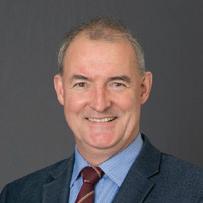


The condition is one of several concerning claims from CHS as part of the new VMO contract negotiating process.
Other CHS claims include:



% increase per year
Intern $77,898 $91,264 17.16% 3.81%
Senior Resident Medical Officer 3

$122,359 $139,168 13.74% 3.05%
Senior Registrar $158,634 $178,252 12.37% 2.75%
Specialist Band 1 $188,151 $210,055 11.64% 2.59%
Removal of required consultation with AMA, the Visiting Medical Officers Association (VMOA) and relevant college regarding on-call rostering


VMOs to be required to use an ACT Government email address for ‘fulfilling any requirement under the contract’













Sessional Indexation to be 1.5% per year
Continuity bonus to be removed AMA ACT and the VMOA have lodged our claims as the endorsed representatives of VMOs for the new contract and are scheduled to meet with CHS in December. Any unsettled claims remaining after the negotiating period can be referred to arbitration in mid-2023.
The AMA ACT Council of Doctors in Training has launched the Hospital Health Check 2022 survey, and all Doctors In Training (DiTs) are invited to participate. This longitudinal survey captures the issues currently affecting junior medical officers and also allows comparison to results from previous years so we can assess improvements and losses in working conditions.




This is a vital opportunity for all DiTs, from interns through to registrars, to have their say.
The link to participate in the Hospital Health Check 2022 is surveymonkey. com/r/W5J7NGR

Orthopaedics ACT will be closed from 3pm on Friday 23 December 2022 and reopen at 9am on Monday 9 January 2023.


To ensure optimum care of any post-operative patients, we will run a nurse-led clinic, by appointment only, on Thursday 29 December 2022 and Thursday 5 January 2023.

[3] ISSUE 5, 2022
CANBERRA DOCTOR: Informing the Canberra medical community since 1988
Dr M. Saqib Zafar
Greg Schmidt, senior workplace relations advisor at AMA ACT, has been working on the enterprise agreement.
The ROADSAFE Study
The Australian Road Safety
Study
The thriving doctor: conference update
for Older Adults
Are you a registered General Practitioner (GP)?
We are seeking GPs who have experience in assessing driving capacity in older adults, including cognitive function and how it relates to driving

Participation in this study involves a 20-minute interview via telephone. Responses will be stored anonymously. You will receive a $50 online WISH Gift Card for your time.
If you are interested in participating, please scan the QR code and complete the online registration form.

For more information, please contact Dr Kayla Stefanidis on 5430 1166 or email (ROADSAFE@usc.edu.au )
University of the Sunshine Coast Ethics Approval (HREC A211678)



Bungendore GP Dr Marjorie Cross said the three-day conference was an invaluable opportunity to consider the individual, workplace and systemwide factors that contribute to doctor wellbeing and conversely to burnout. “I cannot emphasise enough how valuable the conference was,” she told Canberra Doctor. “We heard from some outstanding thinkers from around the world who have been collecting evidence that shows supporting doctor wellbeing is central to enabling doctors to do their jobs well.”

International speakers included Dr Tait Shanafelt from the Stanford School of Medicine and Dr Helen Garr, Medical Director of NHS Practitioner Health in the UK. Delegates also heard some deeply personal stories, including that of psychologist Sharee Johnson, who was so troubled by the lack of empathy among some doctors while her husband was dying of cancer that she wrote a book to help them. Called The Thriving Doctor, it is a handbook on how doctors can better care for themselves, so they can better care for others.
speakers at the conference spoke about the influence of
“One issue raised was the importance of encouraging the regulators to fulfil their obligations in as timely a manner as possible,” Dr Cross said. “Ultimately, doctors should be reassured it is only the most egregious issues that affect patient safety that the regulators are interested in.”
The doctor as patient
The Australasian Doctors Health Network presented at the conference on the work of their member organisations, which include Drs4Drs ACT. Dr Cross shared how a team of GPs and specialists in the Canberra region are working together to provide medical care to local doctors and medical students in need.
Dr Cross told Canberra Doctor the big difference with consultations with doctor-patients was around shared decision making. “At one level, consultations with doctors are no different to any others; doctors are human beings, with human needs, just like any other patient,” she said. “But shared decision-making – while always the aim – takes on heightened importance when the patient is a doctor. We need to respect the unwell doctor’s skills and what he or she brings to the table.”
Drs4Drs 1300 374 377
The confidential Drs4Drs 24/7 phone support line 1300 374 377 connects Canberra doctors and medical students to local doctors and is available to assist with all health and wellbeing needs. Drs4Drs has recently introduced LGBTIQA+ focused support, which can be accessed by simply mentioning this preference at the start of a call.
Dr Cross encouraged doctors who use the service to provide AMA ACT with feedback. “We really want to make this service as useful as possible to our doctors and medical students, and so we need to hear from you,” she said.

[4]
ISSUE 5, 2022
CANBERRA DOCTOR: Informing the Canberra medical community since 1988
Several
regulators on doctors’ wellbeing.
What is necessary for a doctor to thrive? Amid rising rates of doctor burnout, this important question brought medical leaders together from across the country in December for the Australasian Doctors’ Health Conference in Adelaide.
Dr
The 24/7 Drs4Drs ACT Helpline is 1300 374 377 Who’s looking after you? • Work related stress Concern for a colleague Relationship issues Psychological disorders Alcohol or substance misuse Physical impairment General health Drs4Drs ACT offers an independent and free confidential support service for doctors and medical students ama.com.au/act/drs4drsact ACT Helpline: 1300 374 377 (24/7 days)
Adelaide, South Australia
Marjorie
Cross said shared decisionmaking takes on heightened importance when the patient is a doctor.
DHR rollout ‘a very steep learning curve’
Continued from page 1
2000 help requests each day
Associate Professor Rohan Essex, Chief Medical Information Officer for the DHR said the launch had been successful, despite some technical bugs and the time it is taking staff to learn new workflows.
“We did expect a period where we’d have to stabilise the technical aspects,” he said. “It’s hard to test every scenario in a system with so many different interfaces and other bits and pieces.”
A/Prof Essex said the DHR Team was receiving 2000 help requests per day at one point, however he added this was now tapering as teething issues were resolved and staff become more familiar with the system.
“There was a significant incident when the system went offline for two hours the day after we went live, from midnight until about 2.30am on Sunday 13 November due to a hardware failure at the data centre,” he said. “During that time, our clinicians were forced to manage their patients without access to the medical record, which is obviously unacceptable and a significant clinical risk. To my knowledge there was no adverse patient outcome as a result, and a number of safeguards have been put in place to prevent this happening again.”
One of the big issues the DHR Team is now working through is the
problem of referrals being directed to the wrong people, and needing to be manually redirected. “We are actively managing these clinical risks and trying to get on top of them all, and to the best of my knowledge there have been no adverse patient outcomes to date,” A/Prof Essex said.
Concrete benefits
A/Prof Essex said there had already been some concrete benefits from the new system. In the first 10 days of the DHR for instance:
Doses were updated for 14 prescriptions after doctors received a warning to check the dose
385 medications were updated after an allergy warning
684 medications were removed after warning of duplicate order
2,229 blood tests were avoided by adding the test onto an existing laboratory order that was already in the system

“Those checks and balances were not in place to the same extent in the previous systems,” A/Prof Essex said.
“We are also getting a lot of positive feedback from consumers who can now see their future appointments, referral letters, discharge summaries, pathology and imaging results,” he said. “95% of results are released to the patient portal within one day of the test being taken.”
Dr Katherine Gordiev Orthopaedic Surgeon

Shoulder and Upper Limb

Feedback from doctors
Most days the DHR Team runs a ‘huddle’ with clinicians in different areas of the hospital where they can provide feedback on the system. As part of this process, they have a ‘pulse check’, where staff can say how they’re feeling. A/Prof Essex said staff consistently reported they were going ‘ok’ or ‘really well’. “In the first week, a lot of people said it wasn’t as bad as they feared,” he said. “In a handful of areas, doctors have expressed frustration at ‘losing patients’ or because they feel we’re not answering all their calls, but that’s because we’re focusing on the most critical requests for help.”
Radiology and pathology departments have reported improvements to their workflows, he said. “Pathology tends to get disproportionately impacted whenever there’s a slight technical glitch, but things have really settled down,” he added.

Junior medical officers tended to be the most eager and enthusiastic adopters of the system, he said.
“Across the board they have been really positively engaged with the process and the change and they’re instantly realising all the improved
efficiencies of having one system for all your pathology and radiology results, for ordering patient observations and being able to write a note,” he added. However, A/Prof Essex acknowledged that learning a new system remained very disorienting for many hospital staff. “We are now concentrating our support on the outpatient areas and theatres and procedural areas where we know there are more visiting medical officers who might not have used the system yet and where there are also more complicated workflows,” he said. “I think in the first half of next year we’ll start to get to the point where many of us are experts at using this, and it will become very much a clinical support tool,” he said. He added that his team was planning ways to support staff in February, when many will return from holidays and may not recall how to use the system, and when there will also be a new intake of junior doctors.
Big brother concerns
Concerns have been raised about the potential for digital health records to be used to monitor doctors’ compliance. A/Prof Essex acknowledged the Epic system did offer safety metrics, such
as measuring how many patients have had their medications checked on admission and on discharge.
“Doctors’ use of the system can be tracked at an organisational level,” he said. “We can already see that as our clinicians are getting used to using the system all those metrics are improving. At this stage, the aim is to identify areas where the DHR Team needs to improve training, and not to monitor doctor compliance.”
“Clinicians can see their own individual performance on that level as well and we are building department level reports,” he added. “For instance, we are making sure departments are completing discharge summaries on time.”
A/Prof Essex said he was aware doctors were uncomfortable to see the system used in this way, however he stressed that these metrics had already been monitored for many years and were accreditation requirements.
“This isn’t about big brother telling people to improve,” he said. “I’m a big believer that if we empower individuals with insight into their own performance, they tend to improve themselves.”
Dr Gordiev has practiced in Canberra for over 18 years. She undertook Orthopaedic training in Sydney and Canberra and further specialised for 18 months at the Cleveland Clinic in the USA.
Dr Gordiev seeks to ensure that her patients are well informed about all treatment options available to them and to offer a high standard of operative treatment and aftercare.
[5] ISSUE 5, 2022
CANBERRA DOCTOR: Informing the Canberra medical community since 1988
COVER STORY
MBBS (Hons I) (Univ of Sydney) FRACS FAOrthA
Dr Gordiev specialises in Arthroscopy, Reconstruction, Replacement and Trauma of the Shoulder and Upper Limb. This includes arthroscopic and open shoulder stabilisation, shoulder replacement, rotator cuff repair, elbow, wrist and hand surgery.
Ph: 02 6260 5249 | www.katherinegordiev.com.au Suite 7 National Capital Private Hospital, Garran 2605 Please contact us for advice or more information: FIND OUT MORE cpdhome.org.au/eoi-form
Structured medical career pathways “the way to go”
Dave Peffer’s reflection’s from Singapore
Dave Peffer: Singapore’s health system has turned around markedly, particularly in the last 10 years, so it’s now highly regarded throughout Asia.
Professor Russell Gruen [Dean of Medicine at the Australian National University (ANU)] and I met earlier this year with a senior doctor from Singapore, who shared a really interesting concept that has driven a lot of the work to create their world-class health system. It’s all around structuring development pathways for the workforce.
The analogy he used was, if you want to take a team to the World Cup in soccer, you don’t just buy a ball and kick it around in the backyard. You get the best coaches, you train the best players, you import talent and then ultimately if you’re good enough you get a team to the World Cup.
So Singapore structured up its medical workforce pathways, and said, ‘After a couple of years as a clinician we will talk with you about which pathway you should be on’. They had four pathways. The first is to train to become a master clinician, which is for those whose passion and interest is care at the bedside and the latest treatments. The second
is to become a clinician scientist, which is for those passionate about research. There’s also a development pathway for clinician educators and a pathway for clinician leaders.
CD: How does Singapore support its doctors?
DP: Singapore says if you want to be an educator, we’ll train you to do that over a number of years. Ultimately, many of those doctors now have a Masters in Education and understand how to construct a really meaningful learning environment. Their goal is that every trainee coming through the health system should have a world-class learning experience. It’s a similar concept for clinician leaders. They’ve structured up these pathways so that if you want to get into leadership, they’ll take you there with postgraduate certificates and ultimately a Masters of Business Administration.
As soon as I heard about this, I thought, this is really the future. This is what we need to be doing. We need to develop our workforce by these structured pathways and really build a greater partnership with the ANU and University of Canberra. That’s going to be the future of a great health service.
CD: How does this compare to how
we support our doctors in Canberra?
DP: If I look across our specialties, at our unit directors and our clinical directors, some of them are effectively running very large businesses worth $50m plus. Many of them are great clinicians but have no business training.
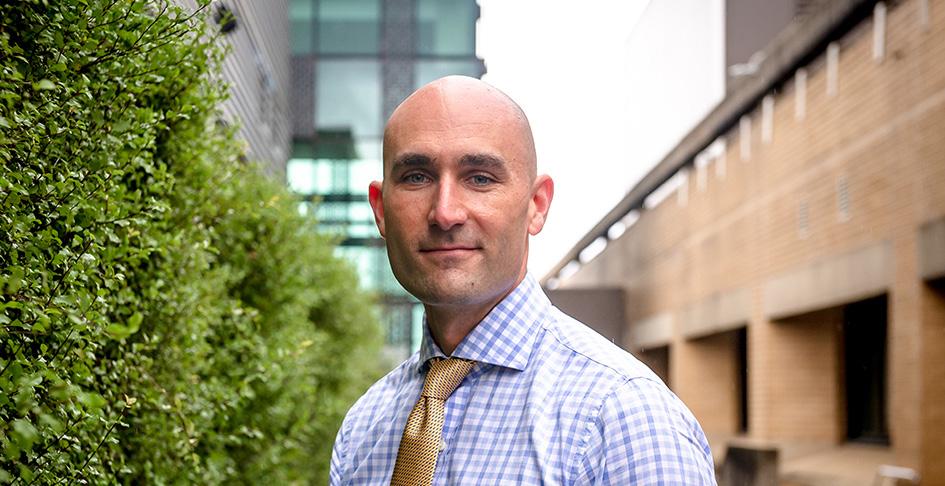
Likewise, if you’re a good clinician in a teaching hospital like ours you’ll have some teaching opportunities. But have we ever trained you to be an educator? We haven’t. We’ve just assumed that because you’re a consultant, you know what you’re doing and that you’ll provide this great learning experience. We know from our students, that’s not always the case. Some of our medical workforce are wonderful teachers but some of them aren’t and we hear that from the colleges.
The last couple of years have been incredibly tough. With the workforce shortages and the pandemic, it hasn’t been an ideal environment for a range of activities. When the service is really strained, what can go first is the research and the teaching and training. As we emerge from a couple of really challenging years, it’s incumbent on us to pull things back and re-establish the focus on those things as priorities.
CD: How is Canberra different
from Singapore?
DP: The populations of Singapore and Canberra are really different, in terms of general level of compliance and how people think about things. Also, Singapore has one tier of government with a single funding model and single level of control for hospitals, GPs and community care. The funding of the system is also quite different. There are very direct financial incentives within the system which act as price signals. When you access services, you are drawing from an account, even though it’s a public service, a bit like with our superannuation system. So people are constantly making decisions about whether they value a service and are happy to pay. We don’t really have those price signals in the public system in Australia.
CD: What did you take away from the trip?
DP: I went to Singapore firmly of the mind that the model of structured development within streams is the way to go and I came back resolute that that’s what we’re going to do with the health service here. Since that time, I’ve had that conversation with both the Health Minister and the Minister for Mental Health
and there’s some strong support, so I think we’ll get some good government backing to get this done. Also, I think, we’ve got a good relationship with the ANU, but we haven’t made the most of it in its relatively short history. The partnership hasn’t flourished here as it has in other jurisdictions between universities and the health system. But now is really our time to hit the accelerator and go.
CD: Who will pay for these structured career pathways?
DP: We’ve committed to doing a piece of work over the next 6-9 months to really start to frame up how this could work in practice, but there will have to be a financial contribution by the health system to get this to work. I don’t think this is something we could line up and just get the workforce to make it work. There will have to be investment. At the end of the day, if it’s a priority, then we will invest in it.
CD: What role is there for Canberra’s universities?
DP: ANU currently provide executive education in a range of fields but health is quite a unique industry. So we started conversations between the ANU and CHS about what that
[6]
ISSUE 5, 2022
CANBERRA DOCTOR: Informing the Canberra medical community since 1988
Dave Peffer, CEO of Canberra Health Services (CHS), recently travelled to Singapore with other movers and shakers in the ACT public health system and local university leaders, to learn how they’ve turned their health system around in the last decade. He says he returned resolute about the need to develop clear supported career pathways for clinicians. Here’s what he told Canberra Doctor.
Canberra Doctor: Why the trip to Singapore?
Dave Peffer
I don’t think we always set people up for success when they move into more senior roles in an organisation…that’s something we will have to turn around.
Singapore.

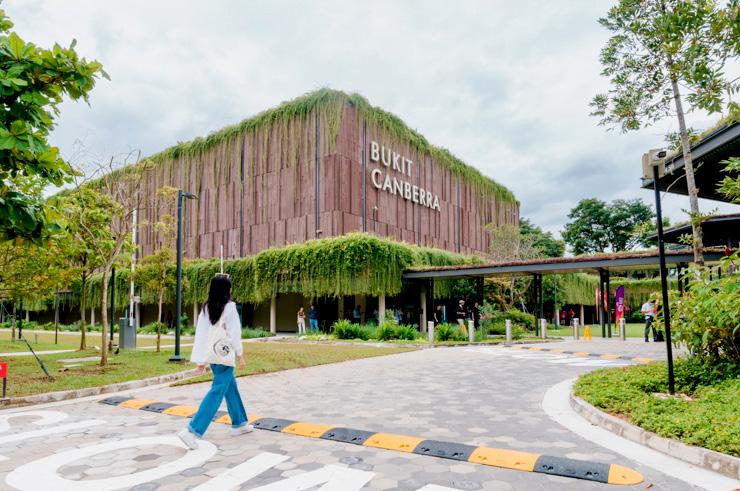
would look like in terms of those development pathways – how we would structure that up and whether we look to international partners to put that together.
CD: Will clearer career pathways make doctors stay in Canberra?
DP: That’s what I’m hoping. I don’t think we always set people up for success when they
move into more senior roles in an organisation. Really, that’s something we will have to turn around if we want this to be a great health service. And it’s in the interest of the health service and our workforce, but at the end of the day, it’s also in the interests of our patients. If we’ve got a really strong research culture and great leaders in the organisation, the care will be great as well.
* The trip was attended by the ACT Health and Wellbeing Partnership Board which includes Dave Peffer, CEO of Canberra Health Services; Rebecca Cross, DirectorGeneral, ACT Health Directorate; Professor Russell Gruen, Dean of the College of Health and Medicine at ANU; Professor Michelle Lincoln, Executive Dean of the Faculty of Health at th e University of Canberra; Megan Cahill, CEO Capital Health Network; Darlene Cox, Executive Director of Health Care Consumers Association; Ross Hawkins, ACT Regional CEO at Calvary Health Care and ACT Minister for Health Rachel Stephen-Smith.
Get ready for changes to CPD
To prepare for national changes to continuing profession development (CPD), doctors are invited to register their interest in AMA (WA)’s new CPD Home service. From January 2024, doctors will no longer be able to self-manage their CPD. Instead, joining a CPD home will be mandatory.

The AMA (WA), which owns doctorportal Learning, has applied to the Australian Medical Council (AMC) to become a nationally accredited CPD home, supporting Australian registered medical specialists, international medical graduates, PGY2+ trainees and non-

vocationally registered doctors. All non-exempt medical practitioners, regardless of AMA membership, will be eligible to subscribe to AMA (WA)’s CPD home service, with AMA members enjoying discounted rates.
Completing a program with an AMC accredited CPD home in 2023 means you automatically meet the CPD home requirements. Those who are self-managing their CPD can continue to do this in 2023, as this is a transition year. However, pending AMA (WA)’s accreditation as a CPD home, doctorportal Learning will no longer be available to self-manage CPD.
CONSULTING ROOMS
For Lease
Features
Central location
Two large consulting rooms and procedure room
Two reception areas with shared waiting room
Purpose built specialist consulting rooms in Moruya, NSW
Generous storage space
Seven parking spaces on site
Close to Moruya District Hospital, site of new Eurobodalla District Hospital and private day surgery at Mogo
Expressions
of interest
Contact Practice Manager on 0438561478, lyniholland@gmail.com
[7] ISSUE 5, 2022
CANBERRA DOCTOR: Informing the Canberra medical community since 1988
Mullimburra Point in Eurobodalla National Park, just a 20 minute drive from Moruya.
The delegation visited Bukit Canberra. Named after the HMAS Canberra, it is an integrated medical precinct, surrounded by a wellbeing precinct with gym and lap pools.
Register your interest, to join the AMA's CPD Home, once available cpdhome.org.au/eoi-form
How to revive student interest in general practice: AMSA report
Recommendations from the report:
The AMSA Roundtable Report, Medical Student Interest in General Practice – Reversing the Trend, warns that by 2032, Australia will have a shortfall of over 10,000 GPs if medical students continue to choose careers in specialties other than general practice.

“Medical students spend the majority of their degree in teaching hospitals, and therefore see their future career through the lens of the
hospital system,” the report warns.
The report is the result of an AMSA Rountable held earlier this year, attended by Federal Health Minister Mark Butler and Shadow Health Minister, Anne Ruston as well as representatives of the peak national bodies for the health workforce, medical education and student advocacy.
Enable
GP
registrars to claim the Practice Incentive Payment (PIP) Teaching Payment


Under the current funding structure, if GP Registrars teach medical students, they are not able to access any compensation. Providing them access to the PIP Teaching Payment would both increase the teaching capacity of general practices, as well as possibly increasing the appeal of entering GP training.
More GP led teaching in medical school
Medical schools should set targets to boost the number of GP teaching staff to run lectures, clinical skills classes and case-based learning. This would give students greater exposure to role models and mentors and reduce stigma associated with general practice.
Reinstate the John Flynn Placement Program (JFPP) for students, or a variation of it
The JFPP gave students experience in a remote or rural community with a one-to-one professional mentor, community host and contact, however funding for it ceased in the 2021 Federal Budget. In its place, a new program has been set up which provides placements for prevocational doctors. Jasmine Davis, president of AMSA commented: “It’s risky to only have a program in the junior doctor years; if you don’t have good student exposure you may not get enough junior doctors entering.”
medical students
This recommendation is inspired by the Assistants in Medicine role trialled to relieve workforce shortages in NSW hospitals during Covid19, where final-year students could undertake paid employment assisting clinical teams and filling gaps in their workload. Such income support would provide an incentive to value GP placement.
Incentivise universities to prioritise student interest in generalism
Over time, universities could lose some Commonwealth Supported Places if they failed to reach a threshold of graduates interested in or entering generalism. This could be used to encourage universities to seriously consider the representation of general practice within their curriculum and placements.
Medical Benevolent Association of NSW CARING
FOR DOCTORS
We’ve been looking after doctors and their families in the ACT and NSW for over 125 years, offering confidential financial assistance and counselling support in times of adversity or crisis. Whether your issue relates to work, family, addiction, health, loss or financial hardship, we are here to ensure you have the best chance of a full recovery.


Our support is free, independent, non-judgmental and does not require a referral.
So, if you or a colleague has fallen on hard times, please call our Social Work Team on 02 9987 0504 for a confidential chat.
If you don’t need our help now, please show your compassion and support us with a tax-deductible donation so we can continue this vital work. Visit our website www.mbansw.org.au for INFORMATION or to DONATE.
MEDICAL BENEVOLENT ASSOCIATION OF NSW
BY DOCTORS FOR DOCTORS
This needs to be done in parallel to universities actively increasing the number of research opportunities available to medical students in general practice, as well as increasing the number of GP academics in the medical faculty and teaching staff.
[8] CANBERRA
1988 ISSUE 5, 2022
DOCTOR: Informing the Canberra medical community since
A new report provides practical solutions to reverse the trend of declining medical student interest in general practice, including making primary care a teaching centre of excellence.
Provide funding for Assistants in General Practice roles for penultimate and final year
Award academic prizes for students who excel in GP-related assessment and complete generalistaligned research
Read the report at tinyurl.com/ amsaroundtablereport BE REWARDED REFER A MEMBER AND RECEIVE A DISCOUNT ON YOUR MEMBERSHIP RATES REFER 1 MEMBER 25% discount on your membership
Meet AMSA President, Jasmine Davis
Canberra Doctor caught up with AMSA President Jasmine Davis at AMA offices in Barton last month. Jasmine grew up in the picturesque seaside town of Ocean Grove on the Bellarine Peninsula in regional Victoria. She has a Masters of Public Health from the University of Melbourne, where she plans to complete her final year of medical study in 2023. For now, she’s got her work cut out advocating on behalf of Australia’s 18,000 medical students across 23 medical schools and leading more than 500 student volunteers.
What made you want to get involved in advocacy? I’ve found it quite difficult to comprehend how overworked the hospitals are and how we just kept sending people back into the environment that made them sick in the first place. So I’m very interested in preventative health. Doing a Masters of Public Health, I realised you can make so much change if you do policy work and advocacy.
You’re passionate about rural health and general practice. Where have you done your clinical rotations?
I’m in the Rural Stream of Melbourne Medical School so I’ve spent all my time in rural and regional areas for placement. I’m in an additional stream called the Extended Rural Cohort, where we spend a year in a rural general practice and then rotate into a hospital, rather than the typical model where you spend a year in the hospital and rotate into general practice.
So you want to do general practice? Why? I’m one of those people who like a lot of everything. I can’t imagine myself doing one type of medicine forever in one certain area. I also really like the community aspect of general practice – the continuity of care,
where you get to see someone across their whole life, which I saw a lot of while on my placement in Echuca.
So you’re optimistic about general practice in Australia? Yes I am. You see a lot of pride in general practice in rural areas. When there is a really good clinic in a local town, that can be a centre of healthcare for the whole community. But, at the same time, I’m seeing how the Federal Government isn’t investing in primary care and showing GPs the respect that they deserve. I think Covid has brought to light a lot of the frustrations GPs have with the volume of work they’re doing and how they’re devalued. It is a bit scary being someone who wants to go into general practice and seeing all these people who are burnt out and leaving the profession. It does make you a bit worried about the future. That’s why I’m so invested in advocacy.
What’s it like to be a medical student today? Being a medical student is a really privileged position. You’re able to learn from doctors who have been in the field for a really long time and you get insights into patients’ lives.
The last few years have been really hard for medical students across the
board as many of us spent a lot of our time learning online. We still have some students making up placements that were cancelled. We’re excited for the future but there does have to be investment in healthcare.
Who do you look to for inspiration?
There’s been a lot of really amazing people at the AMA who have taken me and other student leaders under their wings. It’s great to be able to see the way organisations like this, which are so well established, do their policy, research and advocacy. There’s also some very cool women in medicine. Having those sorts of people around who are good role models and creating opportunities for students and making sure the student voice is heard makes such a difference.
CHS to monitor wellbeing using Mayo app
more support.
Canberra Health Services (CHS) will soon begin monitoring staff wellbeing using the Mayo Clinic’s Health Wellbeing Index App, in one of the first initiatives to be funded through the ACT Government’s new $8.5 million Health Workforce Wellbeing and Recovery Fund.
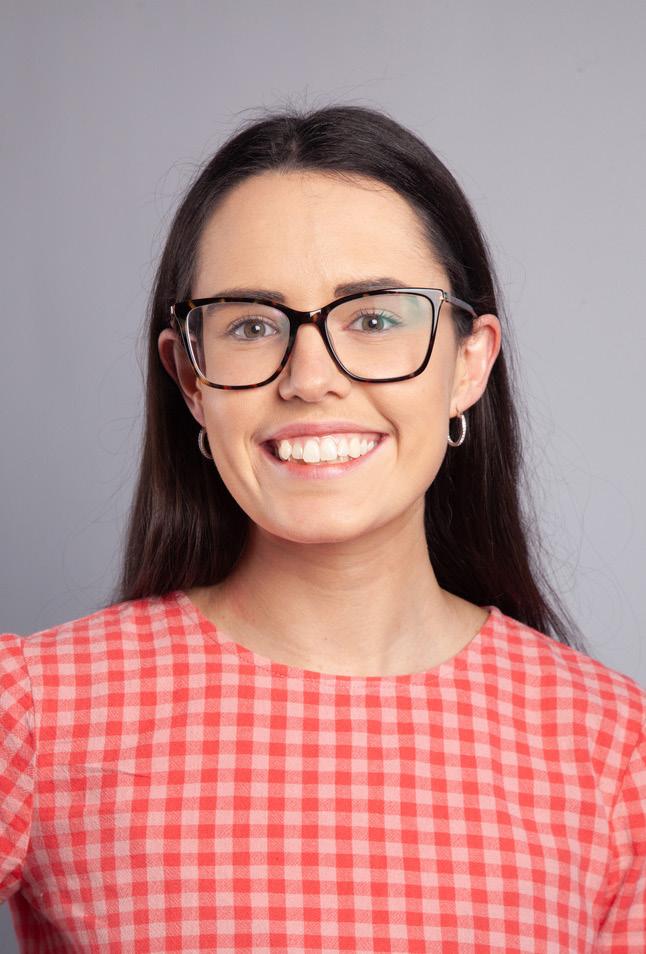

A CHS spokesperson said the new tool, also called the Health Roundtable app, was important in the fight against health practitioner burnout. “The app provides individuals and the organisation with a measurement of wellbeing,” they said. “It also provides resources they can use if in distress, as well as deidentified data to pinpoint areas to executives that need support.”
The app will be available to all CHS staff, with an initial allocation of 500 licences to assess staff engagement and its value to staff, the spokesperson said. “Should engagement and value add be positive amongst staff, the intention is to roll the app out more widely,” they said. “There will be a focus on graduate medical and nursing staff.”
AMA President Professor Walter Abhayaratna welcomed the announcement: “This is a sensible step and an encouraging sign that the Government is interested in developing evidencebased solutions to the very serious problem of burnout.”
“We would like to see the Government go a step further and make Health and Hospital Boards legally responsible for staff wellbeing and for promoting a culture that supports health, safety and wellbeing, as has recently been done in Queensland and South Australia.”
Electronic health records and burnout
A spokesperson for Canberra Health Services acknowledged there was a relationship between electronic health records and burnout. “Inappropriate and ineffective electronic health records can cause burnout; conversely, electronic health records that are well implemented and reduce administrative burden contribute to health workforce wellbeing,” they said. The spokesperson said the DHR had been built to ensure workflows are fit-for-purpose and suited to the ACT. “It is acknowledged initial implementation can be an increased time of stress, which is why additional resourcing above that recommended by other implementations of electronic health records in other jurisdictions and countries was facilitated across our health services,” they said.
In addition to providing technical training and support, and regularly checking how different teams within the hospital are faring, the hospital provided food and drinks to encourage staff to take a break, and even brought in therapy dogs and massage therapists, they said.
[9] ISSUE 5, 2022
CANBERRA DOCTOR: Informing the Canberra medical community since 1988
The app will provide the hospital will a measurement of wellbeing and show which areas need
Jasmine Davis: “You see a lot of pride in general practice in rural areas.”
REFER 1 MEMBER 25% discount your membership REFER 2 MEMBERS 50% discount on your membership REFER 3 MEMBERS 75% discount on your membership REFER 4 MEMBERS No membership fee for one year
Canberra Script improving patient safety
from patients taking multiple medicines of concern, and this is hugely important to patient safety. It means we’re able to detect patients at risk of harms, that we previously couldn’t.”
Canberra Script also has a range of user-friendly features, from a simple self-registration portal to integration with popular practice management software. Additionally, it has a uniform interface with other jurisdictions (branding aside) and can help focus your attention on high-risk scenarios via prompts and notifications – it does this in real-time, via a secure web portal that connects to a national prescription database. Therefore, the information available in Canberra Script can be particularly helpful when working across borders.

This expanded list of monitored medicines… means we’re able to detect patients at risk of harms, that we previously couldn’t.
Acting Chief Pharmacist at Pharmaceutical Services, Miss Amanda Galbraith said: “Almost daily, my team is fielding calls from doctors and pharmacists who have used Canberra Script and found concerning patterns of prescribing and dispensing – often something

they weren’t expecting to see.”
Canberra Script monitors a broader range of high-risk medicines than was the case in the former realtime monitoring system, which was known as DORA. It includes all Schedule 8 (controlled) medicines, as well as Schedule 4 (prescription
only) medicines of concern –including benzodiazepines, codeine, tramadol, z-drugs, gabapentin, pregabalin and quetiapine.
Miss Galbraith explained: “Essentially, this expanded list of monitored medicines is tied to the growing evidence base of harms, particularly
Prescribers and pharmacists can use the information in Canberra Script to formulate the most appropriate treatments, in consultation with patients, Miss Galbraith said.
“We’ve seen some very positive changes to daily practice from both
prescribers and pharmacists—a decision to check Canberra Script when they previously may have let the moment pass—and this too has led to further interventions at the front-line of healthcare, with more patients being linked to higher levels of support,” she said. “It’s becoming quite clear now that a check of Canberra Script forms part of best-practice for monitored medicines prescribing.”
The Australian Medical Association (AMA) is the peak professional body for doctors in Australia. The AMA promotes and protects the professional interests of doctors and the healthcare needs of patients and communities.
[10] CANBERRA DOCTOR: Informing the Canberra medical community since 1988 ISSUE 5, 2022
It’s been more than ten months since the ACT’s new real-time prescription monitoring system, Canberra Script, came into being. Over 1600 prescribers and pharmacists have signed up to it and there are signs it is already making a difference to patient safety.
1.
Advisors
you
2.
Advocacy on important issues that matter most to you. 3. Limited legal assistance General advice on routine legal matters impacting doctors. 4. Medical Journal of Australia 22 editions of the highlyrespected journal every year. 8 Benefits of AMA ACT membership: 5. List of Medical Services and Fees Costing assistance and guidance on medical services and fees. 6. World-class membership portal Networking, peer mentorship, and professional opportunities. 7. Wellbeing support services Free and confidential 24/7 counselling and peer support. 8. Coaching services and career solutions Designed to support doctors across their entire career lifecycle. 1 5 2 6 3 7 4 8 Join online: ama.com.au/act Or contact the membership officer: membership@ama-act.com.au JOIN NOW Leading Australia's Doctors. Promoting Australia's Health.
From the ACT Health Directorate
Workplace relations
to help guide
through any workplace issues.
Lobbying and advocacy
NON-FICTION
Together We Can
by Claire O’Rourke
August in Kabul: America’s Last Days in Afghanistan
by Andrew Quilty
the discomfort of doubt. We listen to opinions that make us feel good, instead of ideas that make us think hard. The result is that our beliefs get brittle long
Ten Steps to Nanette: A Memoir Situation
 by Hannah Gadsby
by Hannah Gadsby
and the summer that stretches their relationship almost to breaking point.
Best of Friends
by Kamila Shamsie
before our bones. Intelligence is no cure, and it can even be a curse: there’s evidence that being good at thinking can make us worse at rethinking.
With bold ideas and rigorous evidence, organisational psychologist Adam Grant investigates how we can embrace the joy of being wrong, harness the surprising advantages of impostor syndrome, bring nuance to charged conversations, and build schools, workplaces, and communities of lifelong learners.
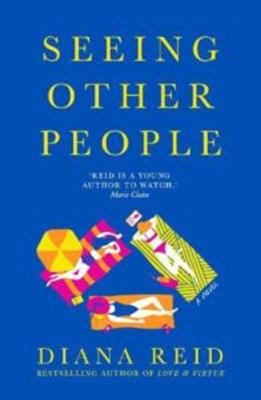

MEMOIR & BIOGRAPHY
The Uncaged Sky
Millions of Australians are quietly freaking out about climate change, and Claire O’Rourke is one of them. We know the science is bad, we’re signing petitions, recycling our garbage and switching our light bulbs to LED –and we know so much more needs to be done. It’s going to take a big, all-hands-on-deck effort to turn this around, and it can be overwhelming thinking about where to start.
Together We Can is an invitation to anyone worried about what climate change means for our future on this planet. Claire tells the stories of everyday people all around Australia who are already making a difference, and they come from every walk of life: food producers, sportspeople, financiers, psychologists, entrepreneurs, public servants, scientists, teachers, actors, farmers, kids and retirees. These stories show how contributing to healing our broken world also enriches our connections with each other.

Walkely award-winning journalist, Andrew Quilty, was one of a handful of Western journalists who stayed in Kabul as the city fell. His debut publication, August in Kabul offers a remarkable record of this historic moment.

The humiliating end of America’s longest mission is told through the eyes of Afghans whose lives have been turned upside down: a young woman who harbours dreams of a university education; a presidential staffer who works desperately to hold things together as the government collapses around him; a prisoner in the notorious Bagram Prison who suddenly finds himself free when prison guards abandon their post.
Think Again
by Adam Grant
Intelligence is usually seen as the ability to think and learn, but in a rapidly changing world, there’s another set of cognitive skills that might matter more: the ability to rethink and unlearn.
In our daily lives, too many of us favour the comfort of conviction over
by Kylie Moore-Gilbert
The Uncaged Sky is the extraordinary true story of British-Australian academic Kylie Moore-Gilbert’s fight to survive 804 days imprisoned in Iran.

Cut off from the outside world, Kylie realised she alone had the power to change the dynamics of her incarceration.
To survive, she began to fight back, adopting a strategy of resistance with her captors. Multiple hunger strikes, letters smuggled to the media, co-ordinated protests with other prisoners and a daring escape attempt led to her transfer to the isolated desert prison, Qarchak, to live among convicted criminals.
Written with extraordinary insight and vivid immediacy, this book is a powerful meditation on hope, solidarity and what it means to be free.
“There is nothing stronger than a broken woman who has rebuilt herself,” Hannah Gadsby declared in her show Nanette, a scorching critique of the way society conducts public debates about marginalized communities. When it premiered on Netflix, it left audiences captivated by her blistering honesty and her singular ability to take them from rolling laughter to devastated silence. Harrowing and hilarious, Ten Steps to Nanette continues Gadsby’s tradition of confounding expectations and norms, properly introducing us to one of the most explosive, formative voices of our time.
FICTION
Seeing Other People
by Diana Reid
Fourteen-year-old Maryam and Zahra have always been the best of friends, despite their different backgrounds. This year, 1988, anything seems possible for the girls; and for Pakistan, emerging from the darkness of dictatorship into a bright future under another young woman, Benazir Bhutto. But a snap decision at a party celebrating the return of democracy brings the girls’ childhoods abruptly to an end. Its consequences will shape their futures in ways they cannot imagine.
Three decades later, in London, Zahra and Maryam are still best friends despite living very different lives. But when unwelcome ghosts from their shared past re-enter their world, both women find themselves driven to act in ways that will stretch and twist their bond beyond all recognition.
The Midnight Library
 by Matt Haig
by Matt Haig
After two years of lockdowns, there’s change in the air. Eleanor has just broken up with her boyfriend, Charlie’s career as an actress is starting up again. They’re finally ready to pursue their dreams— relationships, career, family—if only they can work out what it is they really want. When principles and desires clash, Eleanor and Charlie are forced to ask: where is the line between self-love and selfishness? In all their confusion, mistakes will be made and lies will be told as they reckon with the limits of their own self-awareness.
Seeing Other People is the darkly funny story of two very different sisters,
Between life and death there is a library, and within that library, the shelves go on forever. Every book provides a chance to try another life you could have lived. To see how things would be if you had made other choices… Would you have done anything different, if you had the chance to undo your regrets?”
A dazzling novel about all the choices that go into a life well lived, from the internationally bestselling author of Reasons to Stay Alive and How To Stop Time


[11] ISSUE 5, 2022
CANBERRA DOCTOR: Informing the Canberra medical community since 1988
Climate action in healthcare: a new year’s resolution?
The importance of addressing climate change at every level of our society is gaining traction. As the health system in Australia produces an estimated 7% of emissions, there are many things the health workforce can do to make a difference.
50,000 litres of water a week produced as a by-product of renal dialysis to flush toilets. This initiative will be rolled out to 10 more renal units in HNELHD in coming years.
Vehicles: Gradually, fleet vehicles will be transitioned, firstly to hybrid and then pure electric models. E-charging stations will also be installed.
With our patients
Some of us have the capacity to influence strategic investments in renewables and waste-reduction processes at our hospitals. Others can bring about small tweaks in the way our local clinic runs to significantly reduce the environmental impact in the long-term.
Many healthcare organisations across Australia have already taken bold steps to address climate change in the workplace, but significant progress will take a commitment from us all. So, what can be done at the place where you work?
At our hospitals
The ACT Government has committed to a zero emissions ACT Government health sector by 2040. The benefits to the environment are
clear, but the flow on effects to the financial bottom line can also be significant. In 2021, the Hunter New England Local Health District (HNELHD) saved nearly $1million by implementing a range of sustainability initiatives in energy, water, fleet, paper and procurement. Some of its initiatives include:
Solar: Work is underway to install solar panels on the rooftop of all its health facilities. Already, Newcastle’s John Hunter Hospital hosts the largest single hospital rooftop photovoltaic solar system in the world, supplying around 12% of the hospital's total energy requirements.

Water: Tamworth Hospital currently re-uses
Waste: HNELHD is investigating innovative ways to approach the disposal of food scraps, general waste and recycling. It is also examining which health-specific waste normally thrown in the rubbish, such as oxygen masks, PVC tubing, and clean, single–use plastics are appropriate and safe for recycling.

At our private clinics
Private practices can reduce paper waste by switching to electronic prescribing and referrals.
Climate champions within our clinics can also advocate for sustainable transport to work, energy efficient lighting, water saving measures, reducing food waste and increasing recycling within our offices.
The Australian Conservation Foundation and Doctors for the Environment’s Green Clinic Guide outlines a number of simple changes that clinics can implement to become more sustainable.
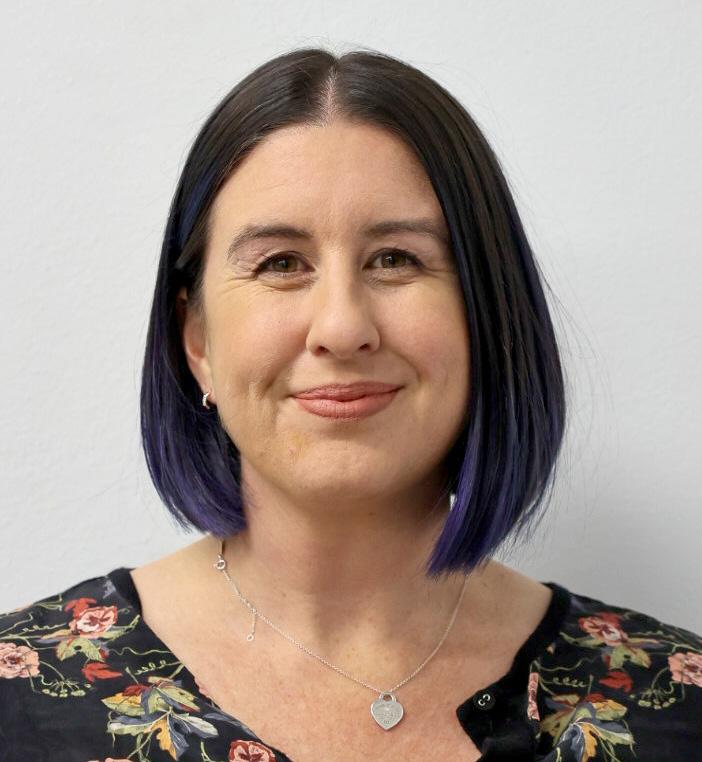
Many of the health strategies that benefit our environment also benefit our patients. The RACGP has long promoted social prescribing and has partnered with ParkRun, which increases physical activity and builds social connections, with the added benefit of strengthening peoples’ affinity for their local parks and reserves. Encouraging patients to get involved with community gardens also provides connections to our environment, social support and teaches sustainable food growth.
When appropriate, reviewing asthma treatment and offering our patients a transition from pressurised meter dose inhalers (pMDI) to dry powder dose inhalers reduces the carbon footprint of their treatment. It has been noted that the gas in a typical salbutamol pMDI causes about as much global warming as the tailpipe exhaust from a car driven for 300km.
*Many of these ideas come from this year’s AMA National Conference, where there was a session on addressing climate change.
For more information and links to resources see the ACT AMA Climate Change website climateactionama.org
[12]
ISSUE 5, 2022
CANBERRA DOCTOR: Informing the Canberra medical community since 1988
Many healthcare organisations across Australia have already taken bold steps to address climate change in the workplace, but significant progress will take a commitment from us all.
BY AMA
ACT PRESIDENT-ELECT, DR KERRIE AUST
Newcastle's John Hunter Hospital is home to the largest single hospital rooftop photovoltaic solar system in the world.
A single-use face mask washed up on the shore of a beach. HNELHD is investigating which health-specific waste normally thrown in the rubbish, are appropriate and safe for recycling.
System failing those with poor mental health
The AMA is calling for:
reform of hospital funding including removing the 6.5% cap on activity growth and 50–50 shared funding between states and the Commonwealth
more mental health beds, matched with medical and allied health staffing in public hospitals
the modernisation of Medicare to support GP-led collaborative primary care
an increase in the mental health community service capacity through expanded medical and allied health staffing
an urgent plan to increase our mental health workforce numbers in public and private sectors
future mental health care policy guided by the professional mental health community
Emergency departments are struggling to cope with an increasing number of patients with severe mental health problems, a new AMA report shows.
The AMA’s Public Hospital Report Card – Mental Health Edition shows that the number of Australians presenting with poor mental health has almost doubled to 121 per 10,000 Australians, up from 69 in 2004. The severity of presentations has also increased, reflected in a growing reliance on ambulances to bring patients to emergency departments and more cases being triaged as resuscitation. AMA President Professor Steve Robson said the findings were “unacceptable” and showed systemic issues in the public hospital system needing urgent attention. The report provides a stateby-state breakdown of public hospital performance, using data from the Australian Institute of Health and Welfare. Key findings for the ACT include:
The rate of ED presentations per 10,000 population in the ACT almost doubled between 2004-05 and 2020-21 from 68.2 to 125.5
The number of patients triaged as resuscitation more than tripled since 2016-17 from 0.5 to 1.7% of all mental health presentations
Emergency triaged presentations (to be seen within 15 minutes) grew by 0.2% since 2016-17, while those triaged as urgent (to be seen within 30 minutes) grew by 4.3%
The median length of ED stay for mental health presentations in 2020-21 was 5 hours and 2 minutes. For presentations ending in admissions, it was 7 hours and 16 minutes (90th percentile was 23 hours and 58 minutes)
Emergency department presentations for mental
funding and strategies to address the mental health crisis in public hospitals involving public hospital doctors, GPs, psychiatrists, and other mental health professionals
health conditions where the mode of arrival was ambulance rose by 10.6% over the five years since 2016
The ACT was the only state/ territory to increase the number of mental health public hospital beds over the period, from 52 per 100,000 in 1992-93 to 127 in 2019-20
Average length of stay for admitted mental health patients in public hospitals in ACT in 2019-20 was 17.4 days, three days above the national average* AMA Emergency Medicine Representative Dr Sarah Whitelaw said the increasing waiting times for mentally unwell patients in emergency departments caused anguish for patients and staff.

“All hospital staff, who are doing their
best under the relentless pressure, are devastated at the impact on their patients and their loved ones and are experiencing their own burn out,” Dr Whitelaw said. “There are also very real and increasing risks to patients and staff from violence and aggression that results from unwell
patients having to wait so many hours in a cubicle that, despite our best efforts, can be very loud and stressful with bright lights and lots of people constantly moving around.”
To read the full report visit ama.com.au/ clear-the-hospital-logjam/mhrc
*Note: A previous study published in Australasian Psychiatry (June 2, 2022) which was reported in Canberra Doctor found the ACT had the second lowest average length of stay for mental health patients in acute hospitals (10.9 days), based on 2019-20 figures from the National Mental Health Performance Framework. However, this contrasts with the latest analysis. Experts say this may be partly explained by the fact that AIHW data set used in the Report Card focused only on admissions with specialised psychiatric care, whereas the dataset used in the earlier study also included mental health admissions to other sections of the hospital.
Weird years: a tribute to Ravi
Canberra Doctor recently ran a story about Ravi Madan, a Canberra artist who tragically look his own life last year, aged 23, after a long struggle with mental illness. An exhibition of Ravi’s artworks was held in December at Smith’s Alternative. Titled Weird Years, it captured Ravi’s experiences of happiness, love, and tragedy.
AMA ACT CEO, Peter Somerville (far left in the picture) said the event showcased Ravi’s prodigious talent and was a reminder of the urgent need to strengthen mental
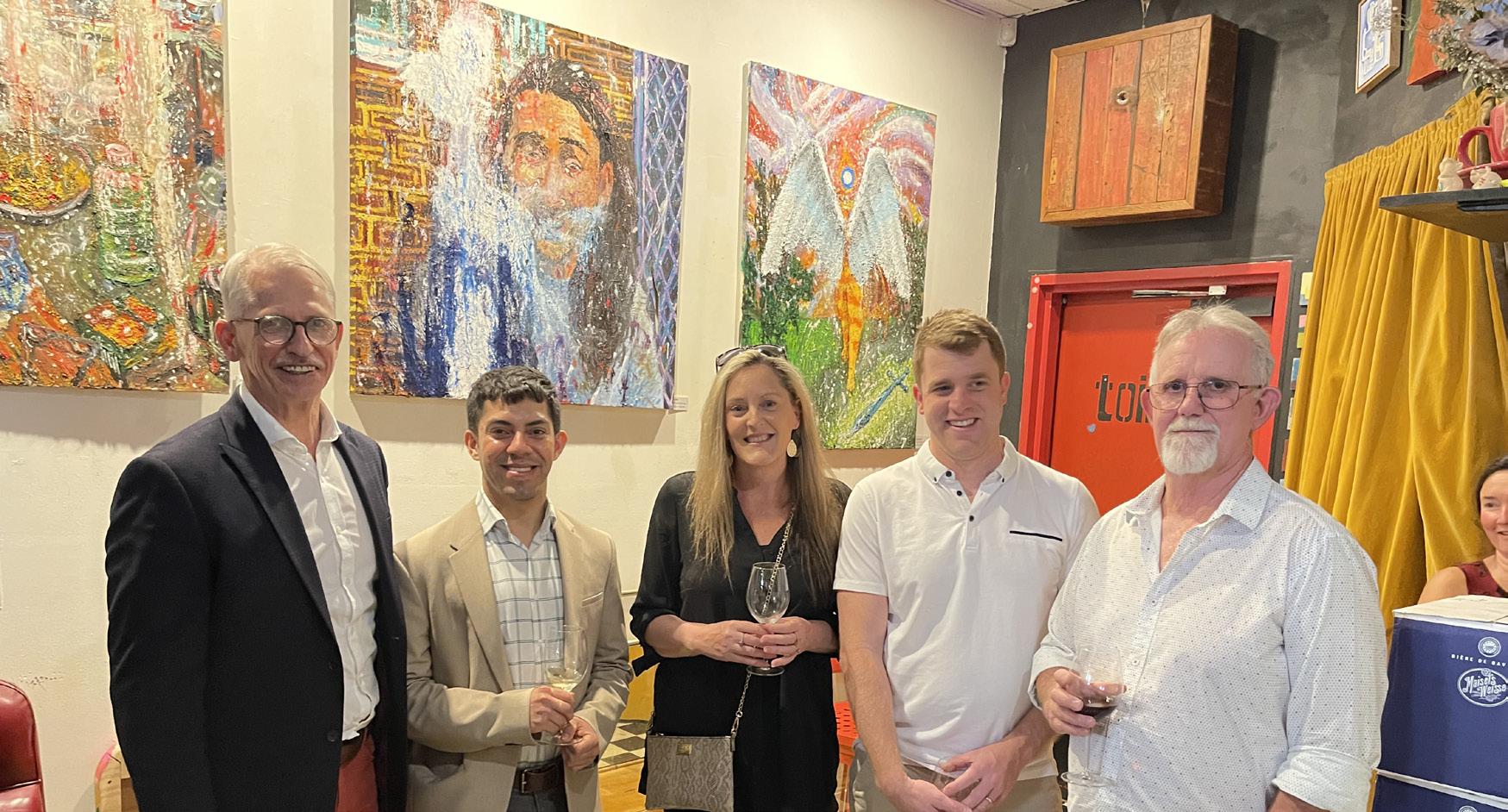
health services in our region.
Ravi’s parents, Leigh Watson and Ashish Madan, said they were pleased to hear at the event from the ACT Minister for Mental Health, Emma Davidson about a range of initiatives the ACT Government is working on to better support young people following a crisis. This includes the expansion and increased scope of the Way Back program managed by Woden Community Services which provides support to people following a suicide attempt.
[13] ISSUE 5, 2022
CANBERRA DOCTOR: Informing the Canberra medical community since 1988
A News Magazine for all Doctors in the Canberra Region

ISSN 13118X25

Published by the Australian Medical Association (ACT) Limited Level 1, 39 Brisbane Ave, Barton (PO Box 560, Curtin ACT 2605)
Editorial: Sarah Colyer sarah-colyer@ama-act.com.au
Typesetting: Poyo Studio hello@poyostudio.co
Advertising: Ph 6270 5410, Fax 6273 0455 reception@ama-act.com.au
Articles: Copy is preferred by email to execofficer@ama-act.com.au in “Microsoft Word” or RTF format, (not PDF) with graphics in TIFF, EPS or JPEG format.
Disclaimer
The Australian Medical Association (ACT) Limited shall not be responsible in any manner whatsoever to any person who relies, in whole or in part, on the contents of this publication unless authorised in writing by it. The comments or conclusion set out in this publication are not necessarily approved or endorsed by the Australian Medical Association (ACT) Limited.
Nursing in China, medicine in Australia and unpaid overtime

is a very hierarchical system where you don’t challenge your senior. But in Australia, as a senior ICU nurse, I could challenge the junior medical staff. I could say to them ‘do you think this is the best thing to do?’. You have more space to think and work as a team in the Australian system.
womb to tomb. You also build that ongoing relationship with people, which I really hold dear to my heart.
You’re passionate about addressing the problem of unpaid overtime among junior doctors. Tell us about that.
that there will be some attrition as the year goes on. As it stands, with staff unable to take leave, people end up accruing so many leave days they just quit and get paid out.
Dr Betty Ge, a GP at Majura Park, grew up in China and initially came to Australia to study postgraduate nursing. While working as an ICU nurse in Melbourne and watching the consultants with admiration, she applied for medical school and was accepted at the Australian National University. She had her first child during her medical school years and also maintained her ICU nursing job. “It was an extremely busy and chaotic time when I was thankful for the support of my husband,” she reflects. Their second child was born between her internship and residency years. Dr Ge is now in her third postgraduate year and 11 months into her training in general practice.
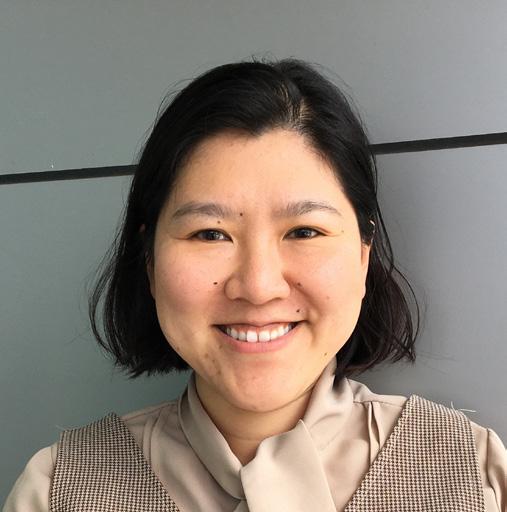
You worked in the hospital system in China. How does this affect your perspective as you practice medicine in Australia?
In my Chinese nursing degree I spent one year in the hospital system. The contrast with the Australian system taught me some important things. One is to have your own critical thinking, because in Asian culture there
The other thing that was a shock to me when I started working in Australia was the abundancy of resources. As much as we complain about our welfare system in Australia, it’s very good, especially at looking after the very disadvantaged. In China, I sometimes struggled with this. I worked in a big paediatric centre for one rotation in China, and it breaks your heart when you know what’s best medically for a kid, but the family just can’t afford it. Sometimes doctors would have to withdraw treatment too early or use an inferior medication because the optimal treatment would bankrupt the family.
How does having been a nurse before you were a doctor affect your perspective?
There are pros and cons of having been a nurse first. I was familiar with working in the hospital team and that helped me in my medical rotations. I think the experience also helped me in my communication with patients. But the downside is that sometimes I need to pull myself back from the details of work to look at the bigger picture. Because as a doctor, you have more of a commander job, directing the treatment rather than doing the individual tasks.
How did you become interested in general practice?
I have always been very interested in people and that’s why general practice appeals to me, in terms of providing that holistic and continuous care throughout the lifetime, from
There is a long-running culture in medicine that doctors work overtime and that it goes either unclaimed, underpaid, not paid at all or not paid correctly. This was a culture shock for me, coming from nursing, where every hour of overtime is paid.
I think the causes are multifaceted. The staffing shortage is not a good start, and Covid has worsened the situation because it made it harder to import doctors and increased the workload.
Other factors are recruitment and rostering. A pattern we’ve noticed in Canberra is that in the second half of

The other issue is that young doctors feel obliged not to claim unpaid overtime because they don’t want to be seen as a greedy doctor or ineffective in their time management and potentially jeopardise their career progression.
Some states have gone down the road of class actions, but it’s very hard to get the momentum because doctors are reluctant to come forward.
Given the forecast shortage of more than 10,000 GPs by 2030, what can be done to make general practice training more attractive in Australia?
AMA and RACGP are currently talking with the Department of Health about establishing a single employer model for GP trainees so your entitlements such as sick leave and long service leave follow you across your different training terms. This is really important, especially for those people who come to general practice as PGY6-10 for instance, and suddenly experience a major drop in their earnings and entitlements.
You’re also a passionate advocate for doctor wellbeing. What are your observations?
Christmas crackers!

the year, the workforce shortage gets dire because people take leave for various health and personal reasons such as pregnancy or burnout. We end up paying a lot of locums to fill those black holes in staffing. Instead, the hospital should overrecruit in the beginning of the year, knowing
As doctors we’re really good at looking after the patient, but we’re not very kind to each other sometimes. But then, it’s a big shock to everyone in the system when you lose a colleague to suicide, and it makes you think about things we could do better to promote our colleagues’ health. I try to encourage my medical colleagues to seek medical help, to look after themselves and to take the time off to prevent burnout, because it does affect the whole workforce.
What did the doctor say to the rocket ship? “Time to get your booster shot!” Why did the doctor tell the nurses to be quiet when walking past the medicine cabinet? So they wouldn’t wake the sleeping pills!
Who is the coolest doctor in the hospital?
The hip consultant
Clown Doctors – The Humour Foundation’s flagship program – works in partnership with medical professionals to divert children during painful procedures and help calm and distract in emergency department settings. They are in 22 hospitals nationwide, including Canberra Hospital. To support their work please visit humourfoundation.org.au or call 1300 486 687

[14] CANBERRA DOCTOR: Informing the Canberra medical community since 1988 ISSUE 5, 2022
5410 Email: reception@ama-act.com.au
Phone: 6270
The betweenreferralby andconsultation specialist where patient oftenofficially added anelectivesurgerywaiting knownas ‘hidden’waiting newAMA explains. reportsays impossible patients informed decisionsaboutwhether waitforsurgeryinthe hospital throughtheprivate hospital withoutknowing howlong willwait AMA calls for ‘hidden waiting list’ data Issue 3, 2022 Canberra Doctor is proudly brought to you by the AMA (ACT) Limited. Circulation: 1,900 in ACT region Informing the Canberra medical community since 1988 Doctor CANBERRA The AMA calling for nation-wide transparency the time it takes to see specialist in a public hospital. VOLUME CANBERRA Informing Canberra medical community since reporting issue.However, evidence Victoria Queenslandshowspatientsare waiting longerthanwaiting time which days forurgentconsults 365 days non-urgentconsults. Forinstance, states,patients typicallywaited than150 for urgentinitialappointment gastroenterologist. non-urgentcases,waitingtimes close exceeded days ophthalmology,orthopaedicand noseandthroatappointments. Tackling backlog AMA Steve commented: “It’s wonder ourhealthsystemisn’tcoping when notcountingthe true people desperatelyneedcare. like countingemergencywaitingroom timeswithoutcountingthehours someone waiting ambulance to thewaitingroom.” Professor while Australian Health Welfare workingwith jurisdictions includeoutpatient waitingdata, nationalplan needednow addressthebacklog. “Weneed tackle backlogof because backlog thenumber peopleturningup droves GPpractices often sheerdesperationtoemergency departments,” said. Commonwealthcurrentlyfunds of“efficientactivity” public hospitals,with stateandterritory governmentsfundingtheremaining. Health Agreement, Commonwealth given only provideupto extra6.5per funding,basedon measure efficientgrowth. AMAiscallingfor 50fundingsplitbetween Commonwealth and and and the cap. the visitama. com.au/elective-surgeryhidden-waiting-list forJanuary March showed patients overduewaitingfor elective surgery 189more the previousquarter of17%). However,howlongpatientswait get waiting notpublicly inthe nor NSW. the averagewaitingtimes differentspecialistsonthe HealthNet However, system longeravailable,GPs patients leftguessinghow longthe be.Anecdotally, non-urgentCategory patients theACT years initial orthopaedicappointment,12-18 months ENTappointmentand 6-12 forgastroenterology andcardiologyappointments. Government provideCanberra with up-to-datefigures thewait initialoutpatientappointments, make deadline week. Victoria Queensland There nationally-consistent Waitingtimesfor outpatientappointments are publiclyreported. initialoutpatientappointment. “Forexample, patientwaitingfor non-urgentkneereplacementwould be thatthey bewaiting year morefor surgeryon electivesurgery list,however beaware thealmost yearwait outpatient appointment,” reportsays. Waiting ACT ACT Health QuarterlyPerformance • Circulation: 1,900 • Print and online • Range of sizes to suit your budget • Custom design service available Spread the word about your event, practice or organisation Get in touch with our team to find out more:
MEET DR BETTY GE: ACT REPRESENTATIVE ON THE AMA’S COUNCIL OF DOCTORS IN TRAINING
There is a longrunning culture in medicine that doctors work overtime and that it goes either unclaimed, underpaid, not paid at all or not paid correctly.























[15] ISSUE 5, 2022
T H I S I S T O C E R T I F Y T H A T F O C U S O N Y O U R P A T I E N T S A N D L E T U S F O C U S O N T H E N U M B E R S BOOKKEEPING SERVICES Karen Groves Founding Director We understand the complexities of running a medical practice splitting income between doctors and reconciling your accounting system to your front office system Professional - Responsive - Outcome Driven P 02 6196 9496 E OFFICE@SUCCESSFULALLIANCES COM AU WWW SUCCESSFULALLIANCES COM AU Dr Sabari Saha MBBS (Hons), FRACP Geriatric Medicine Physician l Comprehensive Geriatric assessments l Falls assessments l Cognitive assessments l Medication reviews l Home visits & Residential Aged Care Facility visits Telehealth Consultations & Bulk Billing available suite 11/12, napier close, deakin act 2605 Phone: 02 6154 5031 Fax: 02 6169 4437 Orthopaedic Surgeon CANBERRA 60/35 Torrens St, Braddon ACT 2612 Ph 6109 0002 Fax 6109 0003 GOULBURN ELLESMERE SPECIALIST CENTRE 56-58 Clifford St, Goulburn NSW 2580 Ph 4823 0223 Fax 4822 5417 Dr Wisam Ihsheish MBBS (Adel) FRACS (orth) FAOrthoA Knee arthroscopic surgery, hip and knee replacements and general orthopaedics Acceptingnewreferralsin CanberraandGoulburn CANBERRA LASER AND GYNAECOLOGY CENTRE has RELOCATED his Gynaecology and Colposcopy practice to: Suite 9 John James Medical Centre 175 Strickland Crescent Deakin ACT 2600 He will be providing the same services as previously. Phone: 02 6273 3102 or 02 6282 4920 Fax: 02 6285 3265 Email: deakingynae@gmail.com Dr. Philip Mutton Dr. Philip Mutton l Shoulder Arthroscopy l Shoulder Replacements l Wrist Arthroscopy and Replacements l Distal Radioulnar Joint Replacements l Dupuytren’s Disease l Carpal and Cubital Tunnel Syndrome l Sports Injuries l Patient Focus Rehabilitation using Digital Medium Dr Igor Policinski MD FRACS(Ortho) HAND, WRIST, ELBOW, SHOULDER & TRAUMA Dr Policinski has trained and attained subspecialty Fellowships in Australia, USA and France. Dr Policinski offers management of all upper limb orthopaedic injuries and conditions, with special interests in: NEW PRACTICE DETAILS: Website: brindabellaorthopaedics.com.au 1/7 Napier Close, DEAKIN, ACT, 2600 Phone: 02 6210 8777 E-mail: admin@bortho.com.au NOW CONSULTING AT A NEW LOCATION IN DEAKIN A/Professor Ardalan Ebrahimi MBBS (Hons), MPH, FRACS Thyroid, Parathyroid, Head & Neck Surgeon l Thyroid surgery l Parathyroid surgery l Salivary gland surgery l Neck dissection l Skin cancer and reconstruction l Head and neck cancer l Pharyngeal pouch l Thyroglossal duct cysts and branchial cysts Urgent referrals will be seen within 72 hours A | Suite 11B. National Capital Private Hospital, cnr Gilmore Cres & Hospital Rd Garran ACT 2605 P | 02 5134 5934 F | 02 8331 6049 E | admin@canberraheadandneck.com.au W | canberraheadandneck.com.au Assoc/Professor Hodo Haxhimolla Suite 14, Level 5 National Capital Private Hospital Corner Gilmore Crescent & Hospital Road Garran ACT 2605 Ph: (02) 6281 7900 Fx: (02) 6281 7955 n Prostate cancer treatment n Peyronies disease n Robotic radical prostatectomy n Male incontinence n Robotic partial nephrectomy n Laparoscopic radical nephrectomy n Robotic pyeloplasty n Laser Treatment for BPH n Erectile dysfunction n Laser stone treatment n Penile Implant surgery n MRI guided prostate fusion biopsy Dr Julie Kidd GP Hypnotherapist Weight, alcohol, insomnia, anxiety, cancer support etc. Canberra Complementary Health Practice Suite 5, 108 Hawker Pl, Hawker, 2614 0425 300 233 | www.canberrahypnosis.com.au NEED A JP? Certification of documents, witnessing of signatures, statutory declarations and affidavits Call CHRISTINE BRILL: 0407 123 670 Justice of the Peace (ACT) Conveniently located in Garran and close to south side hospitals. To Advertise in Canberra Doctor email reception@ ama-act.com.au The AMA ACT team wishes our readers, contributors and advertisers a safe and happy holiday season. Thank you for all your support in 2022. Merry Christmas and a Happy New Year!
CANBERRA DOCTOR: Informing the Canberra medical community since 1988

Apartment Living Rede ned. Developed and built by *(All information and prices correct at time of print. Buyers should seek their own advice when purchasing property or making investment decisions. Min EER 5.2 - All images are artist impressions and subject to change.) Stamp Duty Exempt Options! Book your private appointment of our fully tted display suite today! SCAN TO REGISTER WodenGreen.com.au



































































 by Hannah Gadsby
by Hannah Gadsby





 by Matt Haig
by Matt Haig



































